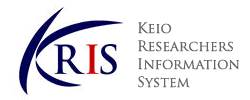-
Affiliation
-
School of Medicine, Center for Preventive Medicine (Shinanomachi)
-
Position
-
Instructor

KEIO RESEARCHERS INFORMATION SYSTEM |
Details of a Researcher
このページはJavascriptを使用しています。すべての機能を使用するためにはJavascript を有効にする必要があります。
Hukuhara, Kayoko
|
|
|
Miyaguchi K., Takabayashi K., Saito D., Tsuzuki Y., Hirooka N., Hosoe N., Ohgo H., Ashitani K., Soma H., Miyanaga R., Kimura K., Tokunaga S., Mitsui T., Miura M., Ozaki R., Nakamoto H., Kanai T., Hisamatsu T., Ogata H., Imaeda H.
Journal of Gastroenterology and Hepatology (Australia) (Journal of Gastroenterology and Hepatology (Australia)) 36 ( 10 ) 2778 - 2784 2021.10
ISSN 08159319
Fukuda T., Naganuma M., Sugimoto S., Ono K., Nanki K., Mizuno S., Kimura K., Mutaguchi M., Nakazato Y., Takabayashi K., Inoue N., Ogata H., Iwao Y., Kanai T.
Inflammatory Bowel Diseases (Inflammatory Bowel Diseases) 25 ( 4 ) 782 - 788 2019.03
ISSN 10780998
Clinical utility of novel ultrathin single-balloon enteroscopy: A feasibility study
Takabayashi K., Hosoe N., Miyanaga R., Fukuhara S., Kimura K., Mizuno S., Naganuma M., Yahagi N., Ogata H., Kanai T.
Endoscopy (Endoscopy) 51 ( 5 ) 468 - 471 2019
ISSN 0013726X
Sun X., Hosoe N., Miyanaga R., Kimura K., Mizuno S., Takabayashi K., Naganuma M., Niizeki H., Seki A., Ogata H., Kanai T.
BMJ Open Gastroenterology (BMJ Open Gastroenterology) 5 ( 1 ) 2018
Cutoff Pepsinogen Level for Predicting Unintendedly Eradicated Cases of Helicobacter pylori Infection in Subjects with Seemingly Normal Pepsinogen Levels
Kishikawa Hiroshi, Kimura Kayoko, Ito Asako, Arahata Kyoko, Takarabe Sakiko, Kaida Shogo, Miyauchi Jun, Miura Soichiro, Kanai Takanori, Nishida Jiro
Digestion 229 - 236 2017.03
ISSN 0012-2823
Takabayashi K., Hosoe N., Miyanaga R., Fukuhara S., Kimura K., Mizuno S., Naganuma M., Yahagi N., Ogata H., Kanai T.
Endoscopy (Endoscopy) 51 ( 5 ) 2019
ISSN 0013726X
日本カプセル内視鏡学会
日本消化管学会
日本内視鏡学会
日本消化器病学会
日本内科学会